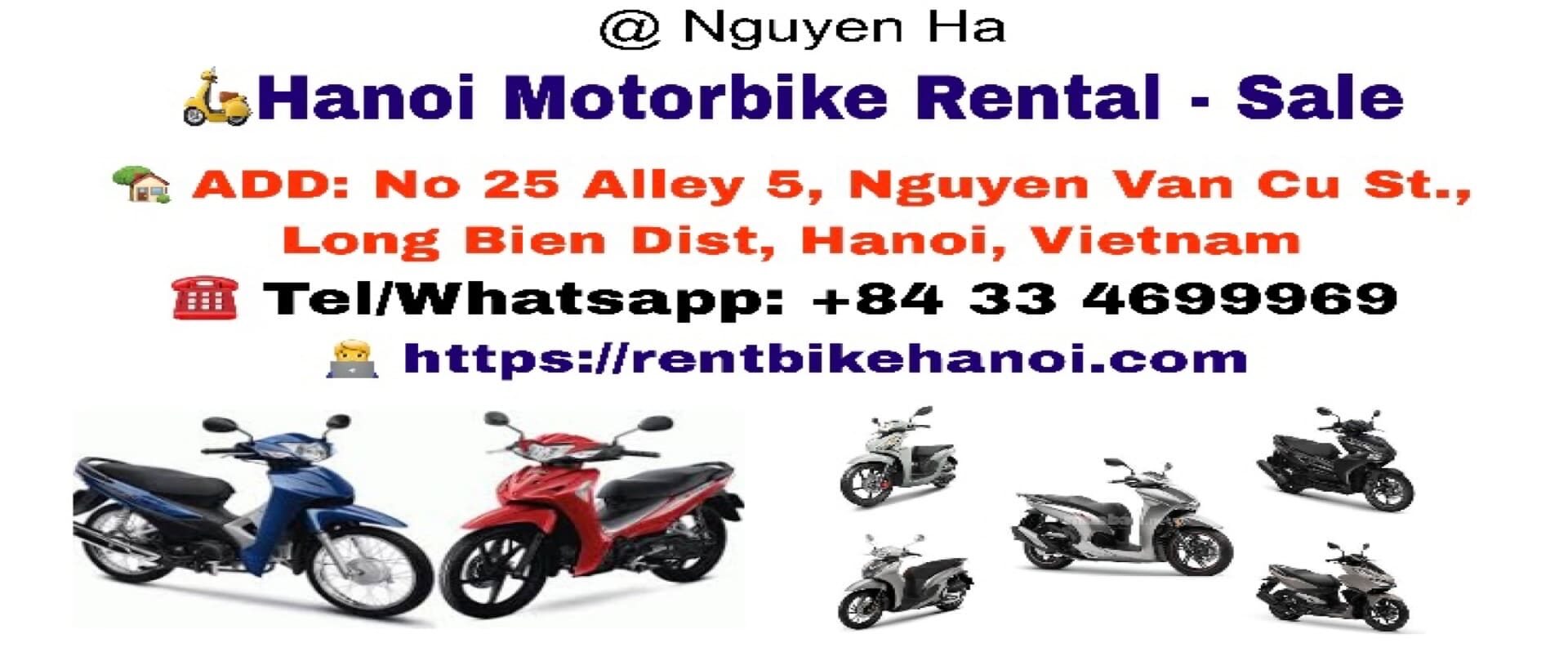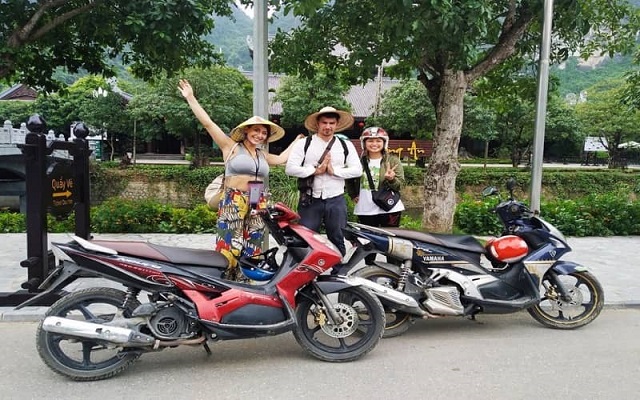Introduction to Motorbike Culture in Hanoi
Hanoi, Vietnam’s vibrant capital, pulses with energy and movement. The city’s streets tell a story of organized chaos, where millions of motorbikes weave through traffic like a synchronized dance.
For travelers seeking authentic exploration, renting a motorbike offers unparalleled freedom. You’ll navigate narrow alleyways, discover hidden cafes, and experience the city like a local.
This comprehensive guide covers everything you need to know about motorbike rentals in Hanoi. From choosing the right bike to navigating traffic safely, we’ll help you make informed decisions.
Why Rent a Motorbike in Hanoi?
Freedom and Flexibility
Public transportation in Hanoi has limitations. Buses follow fixed routes, and taxis can be expensive for multiple daily trips.
A motorbike gives you complete control over your itinerary. Stop whenever something catches your eye, explore at your own pace, and venture beyond tourist hotspots.
Cost-Effective Transportation
Daily motorbike rentals typically cost between $5-15 USD. Compare this to multiple taxi rides or private car services, and the savings become obvious.
Fuel efficiency adds another advantage. Most scooters consume minimal gasoline, making them economical for extended use.
Authentic Local Experience
Vietnamese people predominantly travel by motorbike. Riding one immerses you in local culture immediately.
You’ll understand traffic patterns, discover neighborhood gems, and interact with locals more naturally than from inside a vehicle.
Types of Motorbikes Available for Rent
Automatic Scooters
Automatic scooters dominate Hanoi’s rental market. Popular models include Honda Vision, Yamaha Janus, and Honda SH.
These bikes feature twist-and-go throttles with no manual clutch. Perfect for beginners or those unfamiliar with manual transmission.
Engine sizes range from 110cc to 150cc, providing adequate power for city riding and short countryside trips.
Semi-Automatic Motorcycles
Semi-automatic bikes like Honda Wave or Yamaha Sirius require gear shifting but lack a manual clutch.
These models offer better fuel economy and slightly more power. Ideal for riders with some motorcycle experience.
The learning curve is moderate, making them accessible after brief practice.
Manual Motorcycles
Manual bikes appeal to experienced riders seeking adventure beyond city limits. Options include Honda XR150, Yamaha Exciter, or larger touring bikes.
These motorcycles handle mountainous terrain and long-distance travel better than scooters.
Most rental shops have limited manual bike inventory, so advance booking is recommended.
Where to Rent Motorbikes in Hanoi
Old Quarter Rental Shops
The Old Quarter hosts numerous rental establishments. Locations are convenient, but prices may run higher due to tourist demand.
Popular shops include Flamingo Travel, Style Motorbikes, and Vietnam Motorbike Rental.
Always compare prices and read recent reviews before committing.
Online Booking Platforms
Websites and apps like Tigit Motorbikes, Vietnam Two Wheels, and local rental services offer advance booking.
Online platforms provide detailed bike specifications, transparent pricing, and customer reviews.
Booking ahead guarantees availability during peak tourist seasons.
Hotel and Hostel Arrangements
Many accommodations partner with rental companies or maintain their own fleet.
This option offers convenience and immediate assistance if problems arise.
Prices through hotels sometimes include slight markups, but the added security may justify the cost.
Rental Costs and What’s Included
Standard Pricing Structure
Basic automatic scooters cost approximately $5-8 USD per day. Mid-range models run $8-12 USD daily.
Premium bikes and manual motorcycles range from $12-20 USD per day. Long-term rentals often receive discounted rates.
Most shops require deposits between $50-200 USD or passport retention.
Insurance Considerations
Standard rentals rarely include comprehensive insurance. Some companies offer optional coverage for additional fees.
Verify what damage coverage exists. Many contracts hold renters fully responsible for repairs or replacement.
Third-party insurance for Vietnam travel sometimes covers motorbike accidents. Check your policy details carefully.
Additional Costs
Fuel isn’t included in rental prices. Tank refills cost approximately $2-5 USD depending on usage.
Some shops charge extra for helmets, phone mounts, or GPS devices. Confirm all included items before signing agreements.
Traffic violations result in fines ranging from $10-100 USD. Renters typically bear responsibility for tickets received during their rental period.
Legal Requirements and Documentation
International Driving Permit
Vietnam officially requires an International Driving Permit (IDP) for foreigners operating motorbikes.
Your IDP must specifically include motorcycle authorization. Car-only permits don’t suffice legally.
Obtain your IDP from authorized organizations in your home country before traveling.
Vietnamese Driving License
Long-term residents can convert foreign licenses to Vietnamese ones through local authorities.
The process involves paperwork, translations, and sometimes practical testing.
Most short-term visitors rely on IDPs rather than pursuing Vietnamese licenses.
Passport and Identification
All rental companies require passport verification. Some retain your passport as deposit security.
Consider offering cash deposits instead to avoid surrendering your passport. This important document should stay with you whenever possible.
Always carry identification copies while riding, even if originals remain at the rental shop.
Safety Tips for Riding in Hanoi
Understanding Traffic Flow
Hanoi traffic operates on unique principles. Flow matters more than rigid lane adherence.
Vehicles weave continuously, creating seemingly chaotic patterns. However, the system functions through collective awareness and constant speed.
Never make sudden stops or unpredictable movements. Maintain steady pace and signal intentions clearly.
Defensive Riding Strategies
Assume other vehicles haven’t seen you. Make eye contact with drivers before crossing their paths.
Watch for car doors opening unexpectedly. Stay alert near parked vehicles.
Larger vehicles have right-of-way in practice, regardless of legal rules. Yield to buses and trucks.
Essential Safety Gear
Always wear a helmet. Vietnam law requires them, and head protection is non-negotiable.
Rental helmets vary in quality. Consider purchasing a better helmet if staying long-term.
Long pants and closed-toe shoes protect against road rash. Avoid sandals and shorts when riding.
Common Hazards to Avoid
Watch for pedestrians crossing unexpectedly. People often step into traffic without looking.
Potholes and uneven pavement appear frequently. Stay vigilant, especially after rain.
Night riding presents additional challenges. Reduced visibility and increased drunk driving make evening travel riskier.
Best Routes and Destinations from Hanoi
Inner City Exploration
The Old Quarter’s narrow streets offer architectural charm and cultural immersion. Navigate slowly and respectfully through crowded areas.
West Lake perimeter provides scenic riding with lakeside cafes. The 17-kilometer loop makes an excellent morning excursion.
Ba Vi National Park sits 60 kilometers west of Hanoi. Mountain roads offer cooler temperatures and nature trails.
Day Trip Destinations
Perfume Pagoda complex lies approximately 70 kilometers southwest. The spiritual site combines riding with boat trips and hiking.
Duong Lam Ancient Village preserves traditional Vietnamese architecture. Located 50 kilometers west, it’s perfect for cultural enthusiasts.
Tam Dao hill station offers mountain escape. The winding ascent provides challenging riding and refreshing climate.
Multi-Day Adventures
Ha Giang Loop represents Vietnam’s premier motorbike journey. This northern route requires 3-5 days and offers dramatic mountain scenery.
Mai Chau Valley provides gentler countryside riding. Ethnic minority villages and rice terraces create picturesque landscapes.
Ninh Binh’s limestone karsts and rivers lie two hours south. Combine motorbike riding with boat tours and cave exploration.
Maintenance and Emergency Procedures
Pre-Ride Inspection Checklist
Check tire pressure and tread condition before departing. Worn tires compromise safety significantly.
Test brakes thoroughly in a safe area. Both front and rear brakes should respond smoothly.
Verify lights, horn, and turn signals function properly. These features prove essential in traffic.
Common Mechanical Issues
Flat tires occur frequently on Hanoi’s roads. Learn locations of nearby repair shops or carry rental company contact information.
Engine overheating happens in heavy traffic. Allow your bike to cool if temperatures rise excessively.
Fuel gauge accuracy varies. Fill up when tanks reach half-full to avoid running empty.
Emergency Contact Information
Save your rental company’s phone number immediately. Most provide 24-hour emergency support.
Tourist police hotline: 1900 9091. Officers can assist with accidents or disputes.
Emergency medical services: 115. Know locations of international hospitals before riding.
Cultural Etiquette While Riding
Traffic Communication
Vietnamese riders communicate through horn usage. Short beeps announce presence rather than express anger.
Flashing headlights warn of your approach. Oncoming traffic uses this signal frequently.
Hand signals supplement electronic indicators. Point where you’re turning for added clarity.
Respecting Local Customs
Avoid honking near temples, hospitals, or schools. Show consideration in residential areas during early mornings and late evenings.
Park only in designated areas. Sidewalk parking is common but follow local patterns.
When asking for directions, show patience and politeness. Many locals will help enthusiastically despite language barriers.
Environmental Responsibility
Turn off engines when stopped for extended periods. Excessive idling pollutes unnecessarily.
Dispose of trash properly. Carry a small bag for waste rather than littering.
Support local businesses during your travels. Stop at family-run restaurants and shops along your routes.
Insurance and Liability Concerns
Understanding Rental Agreements
Read contracts thoroughly before signing. Note specific damage assessment procedures.
Photograph the motorbike from multiple angles before riding away. Document existing scratches, dents, or damage.
Clarify who pays for what scenarios. Understand your financial responsibility for theft, accidents, or mechanical failures.
Travel Insurance Coverage
Verify whether your travel insurance covers motorbike accidents. Many policies exclude two-wheeled vehicles.
Some insurers require specific licenses or certifications. Confirm your policy details match Vietnam’s requirements.
Consider purchasing supplementary coverage if your primary policy has gaps.
Accident Procedures
Stay calm if accidents occur. Check for injuries immediately and call emergency services if needed.
Exchange information with other parties involved. Take photos of the scene, damage, and license plates.
Contact your rental company promptly. Follow their guidance for police reports and documentation.
Seasonal Considerations for Riding
Weather Patterns in Hanoi
Summer months (June-August) bring intense heat and occasional storms. Temperatures exceed 35°C with high humidity.
Winter (December-February) feels surprisingly cold. Temperatures drop to 10-15°C with persistent drizzle.
Spring and autumn offer ideal riding conditions. Moderate temperatures and lower rainfall create comfortable travel.
Monsoon Season Challenges
Heavy rain reduces visibility and road traction significantly. Waterlogged streets hide potholes and hazards.
Always carry rain gear. Disposable ponchos are available cheaply throughout the city.
Reduce speed in wet conditions. Braking distances increase dramatically on slippery roads.
Festival and Holiday Impacts
Tet (Lunar New Year) transforms city traffic. Many locals travel, reducing congestion temporarily.
However, finding open businesses becomes challenging. Plan fuel and food stops carefully during major holidays.
Traffic increases significantly before and after holiday periods. Expect heavier congestion during these windows.
Alternative Transportation Options
When Not to Ride
First-time visitors might prefer adjusting to Hanoi’s rhythm before riding. Spend a few days observing traffic patterns.
Those uncomfortable with chaotic traffic should consider alternatives. No shame exists in choosing safer options.
Heavy rain or extreme weather conditions warrant pausing motorbike plans temporarily.
Complementary Transport Methods
Grab app provides reliable motorcycle taxi services. Professional drivers navigate traffic while you ride as passenger.
Traditional taxis and cars offer air-conditioned comfort. Useful for longer trips or when carrying luggage.
Public buses cover major routes economically. While slower, they provide safe and cheap transportation.
Combining Transportation Modes
Use motorbikes for daytime city exploration and taxis for evening returns. This strategy balances adventure with safety.
Rent bikes for specific day trips rather than your entire stay. Flexibility allows matching transportation to daily plans.
Consider guided motorbike tours initially. Experienced guides teach traffic navigation while showing interesting locations.
Conclusion
Renting a motorbike in Hanoi opens incredible opportunities for exploration and adventure. The freedom to discover hidden corners, interact with locals, and travel independently creates unforgettable experiences.
Success requires preparation, respect for local customs, and commitment to safety. Understand the risks, follow traffic laws, and ride defensively.
Whether cruising through the Old Quarter or embarking on mountain adventures, motorbikes provide authentic Vietnamese travel experiences. Take necessary precautions, stay alert, and enjoy the journey.
Your Hanoi motorbike adventure awaits. Ride safely, explore enthusiastically, and create lasting memories in this fascinating city.

